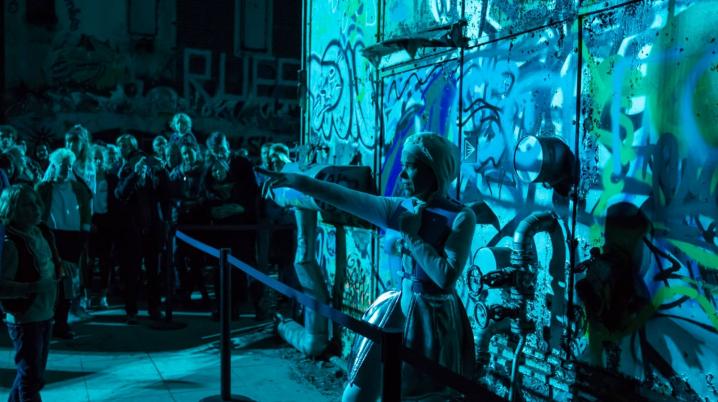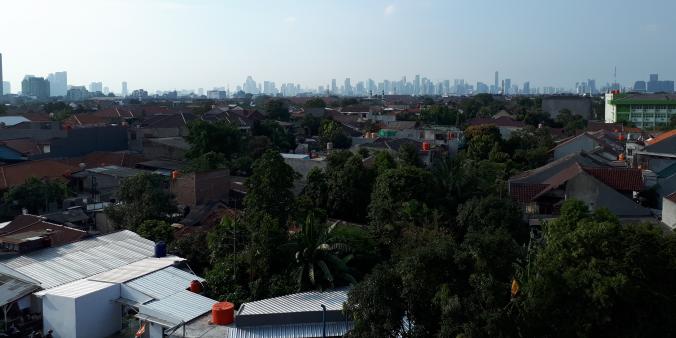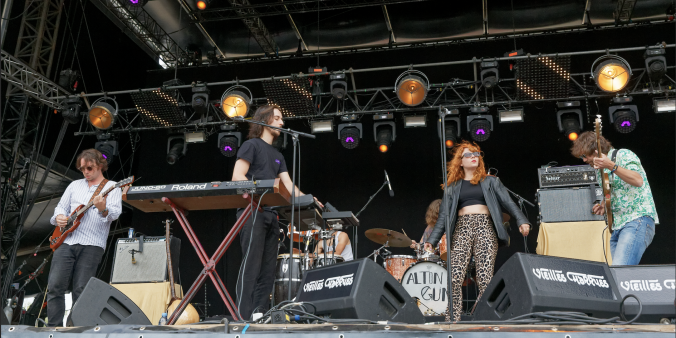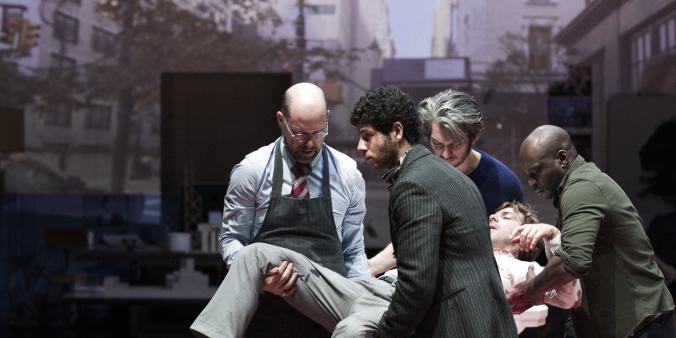
What do the numbers say? On fact-checking general assumptions about cultural cooperation: edition Germany
By Renske Ebbers
As the network and knowledge organisation for international cultural cooperation, DutchCulture carefully collects the data of all cultural activities by people from the Netherlands outside the country’s border. Isn’t it impossible to know exactly what is happening at each pottery market, Rock-'n-roll cafe or independent film festival, all over the world? Maybe. Yet we try, and through our informants and colleagues both in the Netherlands and at diplomatic posts abroad, we manage to monitor most of what is going on.
Right now, we are working on finalising the list of activities of 2018, and I have taken a look at the country heading the list for the past years: Germany. As a coordinator for Germany at DutchCulture, I signalised three general assumptions in my network which, sometimes subconsciously, influence Dutch cultural makers in their international work, and fact-checked them with our database.
1: “It´s all about Berlin”
Thinking about Germany, the first thing that comes to my mind is Berlin. Having the reputation of cultural paradise and artist capital of Europe, it makes sense that many Dutch artists dream of Berlin. But is Germany’s capital really much richer with cultural chances, compared to other parts of Germany? What do the numbers say?
If we look at the DutchCulture data of 2017 and 2018, we see that in 2017, 15% of the Dutch activities took place in Berlin. In 2018 the number drops to 12%. Looking at the German Bundesländer or regions - the city of Berlin is a region by itself - we see that the most popular region is the one right next to the Dutch border: North Rhine-Westphalia. A region not particular known for its international influence, it is apparently the host for many Dutch artists and cultural organisations.
The second largest area is the region in the south of Germany of which Munich is the capital: Bavaria. Perceived as conservative, with an inward, rather than international outward focus, it might surprise us how many international collaboration is happening there. And for those who think that within these regions all activities are limited to the largest cities: Dutch activities in Germany in 2018 took place in a total of 461 different cities and villages.
2: “Design in the south, contemporary arts in the north”
Another assumption that I caught myself having, is that I think I know which kind of art will be most successful in which city or region. For example, we might have a feeling that Munich is the city for designers, that performance art and modern visual art belong in Berlin or Hamburg, and that the countryside of North Rhine-Westphalia is the place to be for bands. Can we find this geographical division in the data? What do the numbers say?
Looking at the 2018 data for the largest regions - North Rhine-Westphalia (NRW), Bavaria and Berlin - one conclusion is easily drawn: every discipline is represented in all regions. A complete concentration of, for example, musicians in the west or painters in the north, is not the case. Still there are some interesting figures: the presence of audiovisual media is very limited in NRW, yet there are large numbers in both Berlin and Bavaria, which is definitely due to the presence of film festivals, such as the Berlinale and Filmfest München.
Even though music does quite well in all three regions, in NRW it makes up 62% of all activities, which means that this assumption is based in reality. Performing arts is actually best represented in Bavaria and least in Berlin. At the same time, visual arts are twice as important in Berlin and NRW as they are in Bavaria. Continuing down this path, there are many more insights to be found concerning the geography of disciplines, which you can search for yourself by country and city, as the 2017 and 2018 data is in the database and accessible for everyone. Just click on 'search' at the top left of this page.
3: “It’s always the same established names that work internationally”
A final assumption that I want to put to the test concerns the people who produce all these activities. In 2018 there were over 700 Dutch organisations and individuals who crossed the border to Germany, yet who are they? I assumed that working internationally is dominated by the established artists and organisations, though I also assumed that for newcomers in the international field, Germany would be a good first step. Indeed the data that we collect is not exhaustive, as mentioned in the beginning, and of course some artists may have had events in Germany that are not in our database. Still, how much of the Dutch cultural presence in Germany, is down to the same big names each year? What do the numbers say?
After cross-referencing all 738 artists on the 2018 list with our data from 2013 till 2017 this is what rolled out: only 30% of the organisations are frequently in Germany (at least three times in the past five years), 21% had been only once before, and 49% of all artists or organisations showed up in our data as first-timers. There may be different causes for these numbers; the fact that the database becomes more inclusive, that many organisations only work abroad sporadically, or that Germany really is a stepping stone for first-timers.
Surprising insights
The swift tour through our numbers that I present here is meant to show that fact-checking our assumptions really can provide us with surprising insights and that this is only the beginning. For anyone with international ambitions, it should proof the usefulness of doing research, of using existing networks, mappings and publications. Our database can help you do that.
At DutchCulture we continuously update and produce new information to help you search, and we organise events to get you up to speed. Concerning Germany, we have an exciting programme coming up on the 18th of April in collaboration with Goethe, where we will talk about Dutch-German intercultural cooperation, give best practices of exchange by experts and show you where the opportunities lay for you. So make sure to reserve a seat.
You're invited to our programme: ‘Ich verstehe nur Bahnhof’ – Cultural work in Germany (Dutch)
Find more information on working in Germany.
Disclaimer Database




